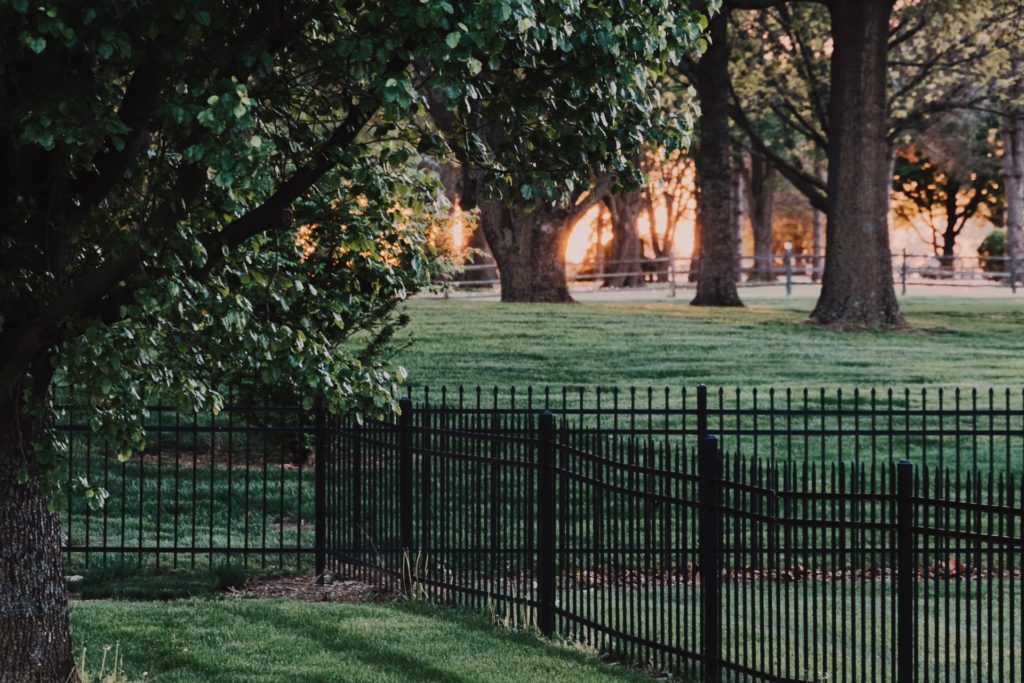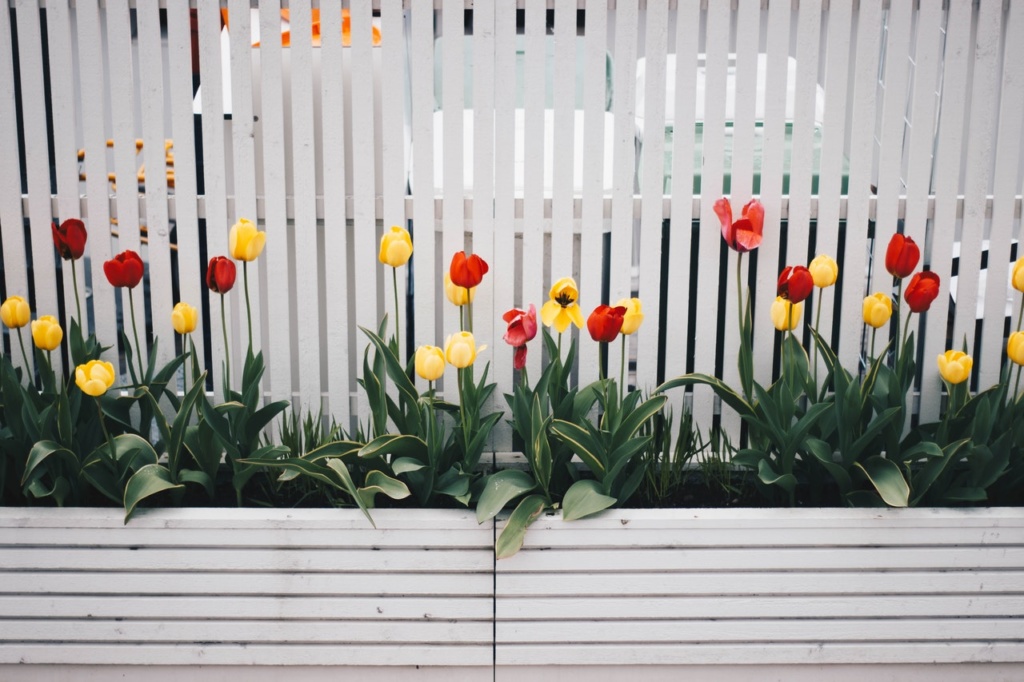Right next to apple pie, a white picket fence is part of the American dream. They keep pets in, unwanted visitors out and can create a sense of privacy for your backyard. But, unfortunately, fencing can be a hefty investment, and not knowing how to go about it might hold you back. So we will equip you with the tools you need to make an informed decision and ensure that your fence is exactly what you need.
What to Consider Before Building a Fence
Before hiring anyone or digging anywhere, there are seven elements of building a fence that you should consider.
Property Rules
There are a few ways that the property you own might affect putting up a fence. First, some Homeowner Associations have specific rules regarding the type of fence you can put up, or if you can even put up a fence at all. Second, property lines are not always clear. To avoid taking down an expensive fence, be sure that where you’re thinking of putting one won’t cross property lines.
Budget
Sometimes people avoid the subject of budget because they are afraid that salespeople might take advantage of it. However, talking over what you are comfortable investing in a fence with your spouse or partner will ensure that you’re both on the same page. In addition, getting clear about your budget will lower the risk of overspending and ease the tension when deciding on the rest of the items on this list.
It’s Purpose
As mentioned above, fencing can serve many purposes, and often they serve more than one purpose at a time. For example, a privacy fence will provide the amount of security you want, but it will also keep the dogs in and the deer out. The purpose of the fence is a critical step to get clear about since it will determine the types of materials used and the height of the fence. If you’re looking for a fence to add curb appeal, you can be flexible with your choices and make a selection that best suits your home’s aesthetic.
Yard Size
Unlike the unlimited fries at your favorite burger joint, the more fencing you need, the more it’s going to cost. And where to put the fence might not be as straightforward as you might think. For example, do you want to fence in the backyard, or do you want to include the front yard? Is there a bit of woods behind your house that you want to fence in, or will that be left to the deer and squirrels? These are all things that will affect the size of your fenced-in space, and you’ll want to get clear about those lines.
Gates
Take a walk around your property and bring along anyone who will be involved in the decision- making process. Talk through the ways you’ll move through your yard and where gates might be helpful for pushing the mower through or letting the dog in and out. While you can add more gates, later on, it will be more affordable and manageable if they are installed as the fence is being built.
Neighbors
If you have neighbors close to where you’re thinking of building the fence, it might be best to have a talk with them about it. Of course, they aren’t a deciding factor on whether or not you’ll
install it, but you can give them a heads up. Informing them of the upcoming project can clear the air, avoid uncomfortable conversations, and get questions out of the way before the project begins.
Fence Material
It’s now time to decide on the type of fence material you’d like to use. Which fencing material will be best for your specific needs will depend on all the choices you’ve made above. Factors like budget, purpose, size and aesthetic will narrow down or broaden your options. So let’s get into some of the most common fencing materials and figure out which will work best for you.
The Best Fencing Materials
There is almost an endless list of options when it comes to fencing materials. Some DIYer’s even use old pallets to create fences or old corrugated metal sheets. However, for a more uniform and long-lasting option, we recommend selecting from one of the options below.
Wood
Options like Cedar, Redwood, Pinewood, Oak, and Cyprus make wood fencing a popular choice for its variety and aesthetics. You can use wood to build a picket fence, privacy fence, post and rail, and lattice. All of these options can be treated or untreated, painted, or stained. If you like the look of a post and rail fence but need to keep in a dog, you can add mesh to the backside of the fence to keep in pets while still achieving the aesthetics you want.
Vinyl
Although vinyl has had a bad reputation for looking cheap and falling apart, recent technologies have made this option more durable while still being an affordable choice. Vinyl fencing comes in a wide range of colors and styles, so you’re likely to find an option that works for you. It can be an excellent option for keeping in pets and as a privacy fence.
Composite
Composite fencing is made of sawdust and plastic materials to create a durable and long- lasting fencing option. They often come in a range of wood-toned colors. However, this option
will require more investment than wood since it is a longer-lasting fence material and needs almost no maintenance.
Metal
Metal has almost as many options as wood, but they cost more than wood in nearly every situation. While they might cost more upfront, keep in mind that you’ll have less maintenance with metal fencing, and they will hold up better over time. Metal fencing options usually come in steel and aluminum. These come in solid or tubular options, which can affect the price, and they come in many different styles that can range widely in price.
Chain Link
Although wood is the most popular fencing material, chain link is a close second. It’s also one of the cheapest options and is an excellent choice for those looking to keep pets and kids inside the fence. If you’re looking to enclose a large space and you don’t mind the looks of chain link fencing, this might be your best option.
When putting up a fence, remember to plan everything out, check your property lines, and determine what purpose you need it to serve. With these tools, you can feel good about your decisions, and soon you’ll be enjoying your newly fenced-in yard.



